

IB English A (Lang & Lit) HL Essay IA examples
Type a search phrase to find the most relevant English A (Lang & Lit) HL Essay IA examples for you
Not sure what to search for? You can always look through our example Internal Assessments below for inspiration.

All English A (Lang & Lit) HL Essay IA Examples
Filter exemplars, how does jordan peele represent racism in the 21st century in his thriller movie ‘get out’, in what ways does henrik ibsen, in his play, a doll’s house, employ stylistic features to communicate the victorian social codes of the 1870s, want to get full marks for your ia allow us to review it for you 🎯, how does barbara kruger’s usage of imagery, text, and coloring in her different artworks create relations in order to employ women’s bodies and beauty standards in society, how does beyoncé portray the american black southern identity struggle by reclaiming cultural elements in the visual album lemonade, how does shakespeare use characterisation to conform to and challenge gender roles and expectations in the play macbeth, fast track your coursework with mark schemes moderated by ib examiners. upgrade now 🚀, how does marjane satrapi portray western stereotypes about the iranian culture in her graphic novel, persepolis i , to what extent does the patriarchy dictate female identity and enforce their transformation in carol ann duffy’s the world’s wife, line of inquiry: how does the representation of women in liza donnelly’s cartoons convey harmful societal norms and expectations as a barrier to women’s empowerment in different levels of society, how does dangarembga’s use of characterisation for tambudzai and nyasha portray hybrid identities as a result of assimilating into a dominant culture in nervous conditions, how do the comedic devices come out as an expression of jo koy’s cultural identity in his netflix special 'live from seattle', how does maya angelou, in her collected poems, celebrate the resilience of women through her perspective as an african-american poet, how does social stratification affect the morality or the moral standards of the great gatsby in the given social context, how rishi sunak's speech net zero reflects a shift in political strategy towards addressing climate change, and how this impacts youth perception and support for increased governmental action, to what extent does jane austen in her novel pride & prejudice use characterization to emphasise the traditional family & marriage model of the early 19th century, how does marjane satrapi use the plot of her graphic novel persepolis to illustrate the effect of fear on a child’s personal development during wartime, how and to what end are stylistic devices utilised in portrayal of masculinity in the late 20th century marlboro advertisements, how does nawal el saadawi represent the impact of religion and culture through symbolic features in the novel, woman at point zero, how does virginia woolf portray women's struggles in the early 20th century through literary techniques and narrative style in “a room of one's own”, how does akhtar represent amir’s internal conflict with his islamic cultural identity in “disgraced”, and to what effect, in what ways and to what effect does marjane satrapi illustrate the struggle for identity formation in persepolis: a story of a childhood, through the use of emilia’s character in othello, how does shakespeare reflect the realities of women in the elizabethan era to provide historical commentary, how does natalie diaz explore the marginalisation of native american people and how it affects their relationship with their identity in her poetry, how does kazuo ishiguro employ a first person point of view to explore the ways stevens’ sense of duty and loyalty shape his identity in the novel the remains of the day, how does michelle obama’s use of transformative narratives in her speeches inspire and empower audience to affect personal and societal change, how does banksy utilize visual and textual elements in his artworks in order to transform the publics opinion on capitalisms prominence in modern-day society, how and why is the notion of corruption in colonial algerian society in the 1940s presented as the result of the rejection of that which is different from the common standard in the stranger, how does george bernard shaw offer a critique of victorian society through characterization in his play “pygmalion”, in "jump and other short stories," how does nadine gordimer employ the concept of "otherness" to examine the ways in which groups construct their identities in a society marked by racism and segregation, how does margaret atwood utilize characterization, symbolism, and setting to portray offred’s change of identity during events after the fall of the united states in the dystopian novel the handmaid’s tale, how does william shakespeare portray the transformation of othello’s character caused by jealousy in his tragic play othello, how does federico garcía lorca convey passion in a way that contradicts the social norms within blood wedding, how does duffy critique the madonna-whore dichotomy by revisiting historical representations of women, how does the narrative of the documentary "ice cold: coffee, murder, and jessica wongso" attempt to reshape the audience's perception of jessica wongso’s guilt, how does banksy utilize visual elements in his 2008 new orleans art collection, to criticize the american government’s response to hurricane katrina, how does travon free utilize symbolism in the film two distant strangers to illustrate the struggle for survival and the need for change for african americans, how does walter astrada represent the pain and violence against women in his photography collection titled “femicides in guatemala”, to what extent does the film dead poets society by peter weir promote the pursuit of passion and self-expression, how does guy delisle’s use of symbolism in pyongyang indicate the democratic people's republic of korea's tactics of maintenance of power, how and to what effect does chekhov's characterization of the titular three sisters reflect the greater sociopolitical upheavals of late nineteenth-century russia, how does natalie diaz portray addiction and its impact on family dynamics.
IB English HLE Explained
Free introductory guide to IB English Higher Level Essay (HLE) by IB44 and IB45 graduates Lareina Shen and Saesha Grover.
In this guide, LitLearn students (and 2022 IB grads!) Lareina Shen and Saesha Grover share their wisdom on how to conquer the IB English Higher Level Essay (HLE).
Lareina achieved an IB44, and Saesha achieved an IB45 as well as the coveted IB7 in IB English Literature HL, so you are in safe hands.
Meet your instructor Jackson Huang, Founder of LitLearn. His mission is to make IB English as pain-free as possible with fun, practical lessons. Jackson scored an IB45 and was accepted to Harvard, Amherst, Williams Colleges, and full scholarships to University of Melbourne & Queensland.

What is IB English HLE?
The HL Essay (HLE) is a 1200-1500 word essay about a text studied in the IB English course. For Lang Lit, the work you choose to analyze can be literary or non-literary, but for IB English Literature the text must be literary.
The HLE will make up 25% of your final IB English HL grade , and it is graded externally. You must choose your own line of inquiry (i.e. a question that you will answer in your HLE–more on this later).
How do I choose my text for HLE?
Do NOT choose the “easiest” text. Life is always better when you do things you're interested in, and that advice applies to the HLE, too. Choose the literary / non-literary work that interests you the most, so that you can (semi?)-enjoy the HLE planning and writing process.
You could start by thinking of a theme that you find particularly interesting and determining which text studied in class demonstrates this theme well.
How do I choose my line of inquiry for HLE?
The line of inquiry is the core question that you will answer in your essay. A quick example might be:
"To what extent is masculinity undermined by the characterisation of Little Thomas?"
Now, it's your job to forge your destiny and come up with your own line of inquiry. But it's not a complete free-for all! There are rules. The main rule is that your line of inquiry must fall under one of the 7 main concepts of IB English (see below for a quick summary).
This summary is vague, so let's go in-depth on a couple of these concepts to really show you what you should be doing in the HLE.
Identity is what makes you, YOU. Here are some questions the concern your own personal identity:
- What is your favourite colour? And why is it your favourite?
- What makes you different from others? Why do you think these qualities came to be?
- How would someone describe you in three words?
Now apply this same logic to characters within your text.
- How would you describe this character in three words?
- How do their actions within a text influence your view of their identity?
- How has the author crafted this character to make you view the character in a certain way?
Let's take a look at a concrete example of how we might choose evidence and quotes for a HLE on cultural identity. This example is based on a Vietnamese work in translation “Ru” by author Kim Thúy. For context, “Ru” is an autobiographical fictional account which explores Kim Thúy's move from Vietnam to Canada as an immigrant and her consequent struggles. The structure of her novel is largely lyrical and poetic.
Let's look at a section from her novel that may help us come up with an essay idea based on the concept of Identity. When she returns to Vietnam, she attends a restaurant, however this becomes a major awakening for her in terms of how she views her own personal identity. Kim narrates within her novel:
The first time I carried a briefcase, the first time I went to a restaurant school for young adults in Hanoi, wearing heels and a straight skirt, the waiter for my table didn't understand why I was speaking Vietnamese with him. Page 77, Rú
This is a perfect quote for the Identity concept. Can you see why? Let's think through it together…
Why would the waiter be confused if Kim, a “briefcase”-carrying individual in “heels” and a “straight skirt”, was speaking Vietnamese with him?
What does being “Vietnamese” look like to the waiter? Why does Kim not conform to his expectation? Was it perhaps due to what she was wearing?
Now, if we look at the section which follows this in the novel, we are able to see the impact this had on the character of Kim's sense of identity.
the young waiter reminded me that I couldn't have everything, that I no longer had the right to declare I was Vietnamese because I no longer had their fragility, their uncertainty, their fears. And he was right to remind me. Page 77, Rú
Here, we can clearly see that this character is now questioning her Vietnamese cultural identity. This is just one example that demonstrates the concept of Identity.
Culture seems to be this confusing thing. Does it have to do with religion? Race? Beliefs? What does it mean? Does the monster from Frankenstein fit into a certain culture?
The easiest way to put it is this: Culture is the way someone lives. It is their “way of life.” Think of it as an umbrella term. “Culture” can include so many different things; the list just goes on, for example religion, values, customs, beliefs, cuisine, etc.
Now think, how would I form an essay from this concept?
- When you read a text in class, you will notice that authors let you form an opinion on the culture of certain characters or groups within a text, but how is this done?
- How does the author represent the culture of a certain community?
- What types of patterns in daily routines are discussed?
It seems odd writing an essay about “creativity” because… like… how can anyone definitively say what ‘counts' as being creative–or not? When I say the word creativity , I think of new inventions, or maybe those weird and wacky art installations living inside those ‘modern art' museums. But hey, what's creative to me might not be creative to you!
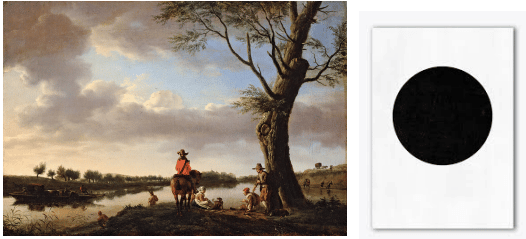
When formulating a HLE on the concept of creativity we have two main pointers for you. Look for:
- Interesting + Unique techniques or literary devices used within a text by the author. You can learn more in the Learn Analysis section of LitLearn.
- Recurring stylistic choices by the author
Now, for this concept, let's look at how we might select supportive evidence and quotations for a HLE on creativity within the narrative style of author Mary Shelley in “Frankenstein”. The narrative style uses epistolary narration . This is a narrative technique in which a story is told through letters. This was something that I found both interesting and recurring within Frankenstein, which I believe worked to create a personal touch within the novel.
Additionally, Mary Shelley allows different characters to narrate Frankenstein during different volumes. Let's investigate this! I have written out different character profiles of the narrators below:
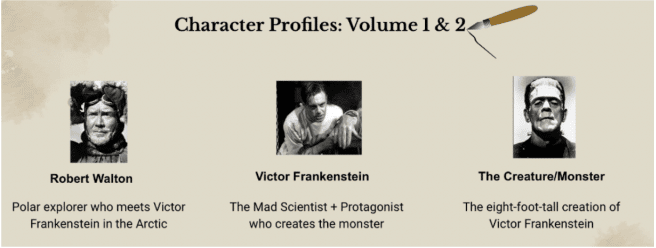
These 3 characters, each relate a part of the novel Frankenstein. This is an example of a creative authorial choice that allows us, as readers to explore different points of view within the text. This is just one example of a creative aspect of a text which you can analyze for your HLE.
Representation
Representation is all about how something is portrayed, conveyed, shown, described, illustrated, depicted . There are many different things that can be ‘represented' within a text, and it doesn't have to be tangible.
For instance, you can look at how a belief, idea or attitude is depicted within a text through different characters or devices.
Again, let's explore a concrete example to make things clear: this time the graphic novel “Persepolis”. We'll consider an HLE on how a text represents the impact of political turmoil on society .
Chapter 10 of “Persepolis” highlights societal changes occurring due to the Iranian Revolution. The panels below list the authorial choices relevant to the negative representation of political change in a society. When looking at the techniques highlighted in the slides below, think about how you feel when you look at the panels below. Can you sense a more positive or negative feeling?
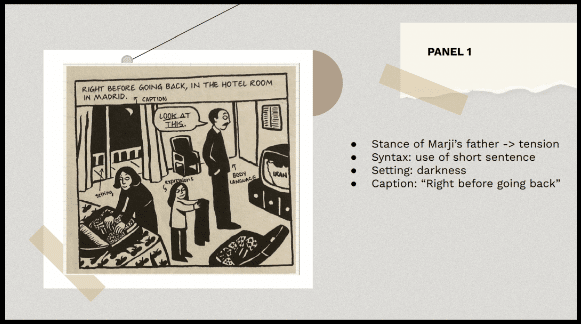
Cool, but what do we do to turn all this into an actual HL essay? Here is a sample response. The introduction might begin like this:
In the captivating graphic novel “Persepolis,” the author Marjane Satrapi explores the social and political impacts of the Iranian revolution. In particular, Satrapi conveys a disapproving viewpoint on political turmoil within the text. Throughout the graphic novel, Satrapi carefully represents how social isolation, hypocrisy and confusion is experienced by a young girl living in Tehran, as a result of political turmoil. Example HLE Introduction
Then, in a body paragraph, on one of the key ideas mentioned above, we could analyze the different literary techniques. For example, Panel 1 is a great representation of the experience of confusion in the midst of political turmoil:
Marji is the younger girl pictured in the panels above. While her parents appear quite concerned by the news on the TV, she appears to not be in full comprehension of the cause for their distress. This is demonstrated by the visual imagery and dialogue, in panel 7, for instance, if you observe the facial expressions by each of the characters. Example of analysis in body paragraph
This is just a short example from one particular text. To help you unpack any text, try look for the following when analyzing chapter to chapter:
- What is the main idea of the chapter?
- Why did the author write it? What purpose does it serve?
- What do you believe is the overarching importance of the passage?
Brainstorming Tips
If you're having trouble picking your text and line of inquiry, then use this simple 20-minute process to brainstorm potential questions for your HLE:
- For each text / non-literary work, go through each concept in the table below.
- Write down a question for each of the two prompts for each category.
- Repeat for all of your texts.
- Pick the question-text combination that has the greatest potential for strong analysis.
How do I ensure my HLE question has a good scope?
Choosing a question with good scope is extremely important, and it's one of the biggest challenges in the HLE. Here's why:
- If your scope is too broad , you may have too much to write about in order to answer the question, and therefore you won't be able to write deep analysis (which is super important–more on this later…)
- If your scope is too narrow , you may not have enough to write about and end up overanalyzing unnecessary and obscure details. Also something to avoid!
So, to help you get the balance just right , here are three examples of HLE questions, specifically for the concept of Identity which we mentioned in the table above (by the way, the example is a made-up novel for illustration purposes).
- Too broad: “How does Irene Majov in her novel Deadly Men effectively make her narrator a powerful mouthpiece?”
- Too narrow: “How does Irene Majov in her novel Deadly Men effectively make her narrator a powerful mouthpiece for the concerns of Asian-Americans toward discrimination in the workforce in the 21st century?”
- Just right: “How does Irene Majov in her novel Deadly Men effectively make her narrator a powerful mouthpiece for the concerns of Asian-Americans in the 21st century?”
How to get a 7 on IB English HLE
There are many things that contribute to a 7 in your HLE and your IB English grade overall. But if we had to boil it down to one secret, one essential fact… then it'd have to be this: Get really good at analysis .
Analysis is the key to a 7 in IB English. It doesn't matter if it's Paper 1, Paper 2, HLE, IO… You must learn how to analyze quotes at a deep level, and structure your analysis in a way that flows and delights your teachers and examiners.
Start with the basics
Start with the basic foundations of analysis for free inside LitLearn's Learn Analysis course.
Our free and Pro resources have helped IB English students skyrocket their grade in weeks, days and even overnight... Learn Analysis for IB English , the simplest guide to a 7 in IB English.
Basic Analysis
No sign up or credit card required.
Free signup required.
Pro members only
Level up to Advanced Analysis
Since you're in HL, you'll also be needing Advanced Analysis skills if you want to impress your examiner. We've got all of that covered inside our Pro lessons.
Advanced Analysis
Finding Quotes
Also, you'll need to find good quotes for your text. Some good sources where you can find relevant quotes include Goodreads , SparkNotes , LitCharts , and Cliffnotes . Of course, you could just find quotes yourself directly–this will ensure your quotes are unique.
Understanding the IB English HLE rubric
An essential step to getting a high mark on the HL Essay is understanding the rubric! It is SO important that you know what IB English examiners are looking for when grading your essay, as this helps you to shape the content of your essay to match (or even exceed) their expectations.
The IB English HL Essay is graded out of 20 marks . There are 4 criteria, each worth 5 marks.
Use the checklist below to make sure you're not making simple mistakes! Note that this is not the official marking criteria, and I strongly recommend that you reading the official rubric provided by your teacher.
Criterion A: Knowledge, understanding, and interpretation
- Accurate summary of text in introduction
- Focused and informative thesis statement
- Effective and relevant quotes
- Relevant and effective summary and ending statement in conclusion
Criterion B: Analysis and evaluation
- Relevant analysis of a variety of stylistic features
- Relevant analysis of tone and/or atmosphere
- Relevant analysis of broader authorial choices i.e. characterization, point of view, syntax, irony, etc.
Criterion C: Focus, organization, and development
- Introduction, body paragraphs, conclusion
- Organized body paragraphs – topic sentence, evidence, concluding statement/link to question
- Appropriate progression of ideas and arguments in which evidence (i.e. quotes) are effectively implemented
Criterion D: Language
- Use expansions (e.g. “do not”) instead of contractions (e.g. “don't”)
- Use of a variety of connecting phrases e.g. “furthermore”, “nonetheless”, “however”, etc.
- Complete sentence structures and subject-verb agreement
- Correct usage of punctuation
- Appropriate register – no slang
- Historic present tense : the use of present tense when recounting past events. For example, we want to write “In The Hunger Games , Peeta and Katniss work together to win as a district” instead of using the word “worked”.
- Avoid flowery/dictionary language just to sound smart; it is distracting and difficult to read. As long as you concisely communicate your message using appropriate language, you will score a high mark under this criterion.
Here's everything we discussed:
- IB English HLE is tough work! Start early.
- Brainstorm using the table of concepts to come up with a strong HLE question. Don't give up on this!
- Analysis is the key to a 7 in IB English HLE (and in fact all IB English assessment). Check out LitLearn's course Learn Analysis for IB English for immediate help on the exact steps to improve in IB English analysis.
Good luck, and may the odds be ever in your favor 💪
Book citations
- Satrapi, M., & Aarne, T. (2007). Persepolis Marjane Satrapi. Like.
- Shelley, M. W. (2014). Frankenstein, Mary Shelley. Spark Publishing.
- Thúy, K. (2009). Ru. Libre expression.
Questionbank
Paper 1 Practice Exams
Past Paper 1 Solutions
Paper 2 Guide
From Struggling to Succeeding in IB English
How IB English students like you have improved their grades with LitLearn Pro... Read the reviews.
IB4 to IB6 in 12 days " LitLearn helped me understand exactly what I was doing wrong and how to improve upon those mistakes. " Read the full review
IB6 to IB7 in 1 week " I ended with a 7 in English Literature HL and I am so happy about that. Thank you Jackson. " Read the full review
IB5 to Perfect 20/20 in 1 week " I managed to be the only person in my IB cohort of 120 students to get a perfect score of 20/20 " Read the full review

IB4 to IB6 in 2 weeks " The lessons are really effective in grabbing my attention and making English more fun to learn. "

IB4 to IB6 in 1 day " With just day 1 of the course, I improved immediately and overnight when I did a practice essay and improved by 4 marks from my previous grades " Read the full review
IB5 to IB7 " I got 5s since my first year of DP and now my final grade is 7! I can't thank you enough 🙂 LitLearn is truly a lifesaver. "
Every resource to ace IB English
Voted #1 IB English Resource 2022 by IB Students & Teachers at ibresources.org
Learn Analysis
Master the essential skill of IB English with a step-by-step course.
Questionbank
Practice analysis with 60+ short questions and IB7 answers.
Exam prep guide, practice papers, past paper solutions.
Exam prep, planning and writing guide. Exemplar essay.
Individual Oral
Preparation guide, examples and full exemplar script.
Higher Level Essay
Crash course on HLE basics.
- Find me a tutor
- Uncategorized
- September 26, 2021
IB English, the HL Essay: All You Need to Know

Written By Our IB++Tutor Birgitte J.
What You Need to Know
- The HL Essay is a 1200-1500 word formal essay and it is based on a literary work studied as part of the course. You cannot use the same work for the IO or the Paper 2 [1] for this essay.
- In the IB Language and Literature course [2] , the essay can also be based on a non-literary or collection of non literary text(s).
- You develop a line of inquiry , a question that lends itself to an argument focused on how a theme or message is conveyed through literary features.
- The essay is completed in your own time and you should get some feedback from your teacher during the development of the essay.
- You do not have to incorporate secondary sources beyond the text you are working with.

The paper is externally assessed, meaning the final grade given is from the IB Examiner, not from your teacher. However, your teacher will give a predicted grade that is sent to the IB [3] .
How to Approach the Essay
The essay requires you to construct a focused, analytical argument, examining the work from a broad literary or linguistic perspective. It also requires you to adhere to the formal framework of an academic essay, using citations and references.
Connection to the Learner Portfolio
The HL essay is based on the exploration you have engaged with in the Learner Portfolio [4] . In the lead-up to the drafting of the essay, you must decide which text to focus on for further investigation, and which topic to write about. In choosing the topic, you can consult the course’s seven central concepts. You can choose any text with the exception of the texts used for the Internal Assessment (the IO) or the Paper 2.
How to choose a text
Don’t wait until the last minute and talk with your teacher about the text you want to use and the focus you are considering. Write your ideas out to make sure your line of inquiry is focused and appropriate for an analytical argument of a paper of this length.
In the case of a collection of short stories, poems, song lyrics or any short literary text, you may choose to use just one literary text from the work. However, It may be necessary to use more than one literary text from the work chosen.
The Language and Literature course only *
In the case of short non-literary texts, it may be necessary to use more than one from the same text type by the same author, for example the same creative advertising agency, cartoonist, photographer or social media user. At least one of these texts must have been studied in class. (If using a text in translation it must be a professional and published translation).
Determining the Topic and the 7 Course Concepts
It’s helpful but not mandatory to start with the seven central concepts of the course in generating or determining a topic for the essay. The questions below are meant as starting points for the focus of the essay, not as complete lines of inquiry which should be more specific to the chosen text (see examples of lines of inquiry below).
Questions may include; How is identity represented in the text? How are the characters in the text representative of a group? How does the text reflect the identity of the writer?
Questions may include; How is an aspect of the text representative of a culture or a particular place? How is a group of people or an institution conveyed? How is the text representative of a cultural perspective?
3-Creativity
Questions may include; How is the text representative of an individual or collective creativity, or lack of creativity? How is the text a reflection of the creativity of the writer?
4-Communication
How is communication or lack of communication conveyed in the text? How does the text itself communicate with the reader? How are aspects of communication illustrated through literary features?
5-Transformation
How is change or development illustrated in the text? How are characters transformed through action, communication or events in the text? What is the relationship between transformation and the goals, values and beliefs conveyed in the text?
6-Perspective
How is a perspective or different perspectives represented in the text? How is a shift in perspective portrayed? How is the writer’s perspective revealed through the text?
7-Representation
How does the text represent a particular theme or message? How are attitudes conveyed? In what way is reality or the world within the text represented?
IB English Language and Literature Guide examples of lines of inquiry
- Identity —how does Ralph Ellison, in his novel Invisible Man, succeed in making his narrator a convincing spokesperson for the concerns of African-Americans in the 20th century?
- Culture —how does Robert Capa represent post-Second World War France to qualify/exemplify the brutalities of the French population on former Nazi collaborators in La Femme Tondue? (Language A: language and literature only)
- Creativity —how do Mario Testino’s portraits manage to convey the personalities of those portrayed in original ways? (Language A: language and literature only)
- Communication– which view of love does Matt Groening convey in Love is Hell? (Language A: language and literature only)
- Transformation– in what ways does The Alan Parsons Project’s Tales of Mystery and Imagination offer a transformative re-reading of Edgar Allan Poe’s tales?
- Perspective– how does Mary Shelley’s protagonist in Frankenstein use the motif of dangerous knowledge to show the perspective of fear and anxiety of excesses in scientific enterprise in early 19th century Europe?
- Representation– through what means does Juan Rulfo successfully convey the representation of realistic and non-realistic characters and situations in Pedro Páramo?
A Final Note on the Learner Portfolio and the HL Essay
The Learner Portfolio is not assessed but schools are required to keep it on file. It is intended to be a platform for reflecting on the texts studied, facilitating development of independent thinking. The reflections may include responses to cultural perspectives and values, inter-relationships and identities as it relates to topics and themes in the texts studied. The reflections may serve as a springboard for the line of inquiry in the HL essay. For example, you may keep a record of themes present, reflections on how particular passages within the texts reflect those themes, or how themes and passages convey one of the 7 central concepts.
[1] Paper 2 is cancelled for the 2022 cohort. No announcement has been made for the 2023 at the time this article was written.
[2] There are 3 IB English courses. The two most common are IB English A: Literature SL/HL, a course focused on literature (Poetry, drama, short stories and novels) and the IB English Language and Literature SL/HL course, focused on literature AND a variety of non-literary (non-fiction) text types.
[3] The examiner’s grade is independent from your teacher’s predicted grade.
[4] An individual collection of student work compiled during the course in which you explore and reflect on the texts throughout the course.
You May Also Like...
Mastering motivation and stress for exam success, top group study tips to make the most out of your time.
- About the IB
- Exam pattern
- Extended Essay
- IB Languages
- IB Subjects
- IB Success Tips
- Internal Assessment (IA)
- Online learning
- Predicted Grades
RECENT POSTS
- Mastering Motivation and Stress for Exam Success April 16, 2024
- Top group study tips to make the most out of your time April 5, 2024
- Top IB Exam Preparation Techniques for Success March 30, 2024
- How to Navigate Post-Mock Challenges February 13, 2024
- Affordable Tutoring Options for IB Students February 12, 2024
Find me a tutor.
Please take one minute to fill in the form to tell us about your tuition needs. Once completed, one of our dedicated team members will reach out to you to fully understand your needs and find the best-match tutor. Our service is risk-free with our 100% money-back guarantee policy in the unlikely event that you are not satisfied with your matched ++tutor.
IB ++tutors is a Canadian company that is committed to providing global, high-quality IB private tutoring services by IB expert tutors.
407 Iroquois Shore Rd. Unit 8, Suite V4 Oakville, Ontario, Canada L6H 1M3
Get Started
- How it works
- Free Lesson per Friend
- Affiliate Program
- Become a tutor
- IB School Support
- Privacy Policy
- Terms of Use
Get In Touch
Toll-Free Support (US & CA)
1-833-611-1133
Global Support
+1-833-611-1133
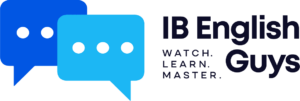
Higher Level Essay
Whether you are an HL Literature student or HL Lang/Lit student, the HLE requires some special attention. The good thing about this assessment is that it’s a processed – rather than on-demand – piece of writing. This means you can take your time, put in the work, and produce something that you love and makes you proud. Our students crush this assessment! Use the same resources they do and enjoy your success.
HLE Writing Guide
Writing this assessment doesn’t have to be challenging. In fact, we think it can be fun and rewarding! Let us guide you through the entire writing process, from line of inquiry to the last word of your conclusion. Our students do well on this assessment, and so can you.

Part of our IBDP English A Student Toolkit , this resource includes:
- 100-page course book with guidance on films, photos, cartoons, and many other non-literary BOWs
- 5 sample papers across genres
- Examiner scores and comments
- Line of Inquiry guidance
- Step-by-step approach to building the HLE in small and manageable chunks
- Complete set of graphic organizers to guide students from start to finish
Developing a Line of Inquiry and Thesis
The Line of Inquiry (LOI) and thesis are the cornerstone of the assessment, so don’t proceed until these are under control. Sadly, many students get off to a poor start with this step, and this means they end up writing either a shallow essay or one that doesn’t really satisfy the requirements of the task. These videos should help you unlock the task.
Start with a text you love and work toward developing a literary or linguistic perspective. Watch this video and start your pathway to success.
How To Write the Line of Inquiry
If the first method didn't work for you, please try another approach.
How to Write the Line of Inquiry (part 2)
Turn that LoI into a clear, precise, and insightful thesis statement that will drive the essay.
HLE Sample Thesis Statements and Writing
The HLE Complete Course from Start to Finish
We feel this is some of our best work. Teachers and students around the world have commented that this HLE series gets the job done and results in some powerful writing that makes students proud. Please take the time and work through the videos sequentially. Work along side with us. Let us guide you to HLE success!
Choose your text and write the LOI.
Student planning doc
Model Student planning doc
Time for brainstorming and outlining.
Student Organizer
Completed Sample Organizer
Master the intro and conclusion.
Sample Intro and Conclusion
Learn how to write strong HLE body paragraphs.
Sample Body Paragraphs
Learn to revise, edit, and polish the final product.
Final instructions before submission
Dave’s complete sample HLE
Some Sample Papers
Sometimes it’s easier to just look at a final product, break it down, and see how other students have approached the HLE. That’s why Dave and Andrew selected some strong papers, highlighted them, and discussed their strengths and weaknesses. We’ve examined tons of these things, so listen carefully. Lots of tips and tricks in these videos to help you pick up some extra points and crack into that mark band you want and deserve. Understand the task. Work hard. Defeat the HLE and allow yourself to beam with pride. Go ahead, you’ve earned it.
You’ve probably noticed that Andrew and Dave love drama. Dialogue, stage directions, props…they’re amazing! Watch our student crush this HLE on Death and the Maiden by Dorfman. What can you steal from this essay in terms of ideas, organization, and overall approach? Document: HLE Student Sample – Drama
Poetry anyone? Andrew and Dave love poetry for the HLE. They are complete “mini works” with a clear beginning, middle, and end. They are rich in techniques. They are complex and have deep meaning. In short, they rock. Just remember that for the HLE, “short texts need friends.” Document: HLE Student Sample – Poetry

Looking For More Support?
Hey, nobody said this thing would be easy. No worries. We’ve got you covered. Perhaps you want to see some more student writing? Check. We’ve got that. Perhaps you want to know some key points to include? Check. We got that too. You’re almost there! Finish these last two videos, add some finishing touches to your work, and submit that baby in with pride and confidence.
So you watched the videos above but are still concerned about “showing deep thinking” on the HLE? It’s ok – we know this is tough. Check out this video to see several samples of how to build big thinking into your writing. Document: Showing Deep Thinking in the HLE
We know, we know. The content is overwhelming and it’s just too much at times. You just want the top ten tips for success? Fine. Here you go. But don’t forget to go back and watch the rest of these videos when you’re feeling more energy. They’re a set. Watch them all and ace the HLE.
IB English Guys
Newsletter signup.

Choose Your Test
- Search Blogs By Category
- College Admissions
- AP and IB Exams
- GPA and Coursework
The Best IB English Study Guide and Notes for SL/HL
International Baccalaureate (IB)

Are you taking IB English and need some help with your studying? No need to reread all the books and poems you covered in class! This study guide is for IB English A students (students in IB English A: literature SL/HL, IB English A: language and literature SL/HL, or IB English literature and performance SL ) who are looking for additional guidance on writing their commentaries or essays.
I've compiled this IB English study guide using the best free materials available for this class. Use it to supplement your classwork and help you prepare for exams throughout the school year.
What's Tested on the IB English Exams?
The IB English courses are unique from other IB classes in that they don't have a very rigid curriculum with exact topics to cover. Instead, your class (or most likely your teacher) is given the freedom to choose what works (from a list of prescribed authors and a list of prescribed literature in translation from IBO) to teach. The exams reflect that freedom.
On the exam for all English A courses, you're asked to write essays that incorporate examples from novels, poems, plays, and other texts you've read. You're also asked to interpret a text that you've read for the first time the day of the exam.
The exact number of questions you'll have to answer varies by the course , but the types of questions asked on each all fall into the two categories listed above.

What's Offered in This Guide?
In this guide, I have compiled materials to help teach you how to interpret poetry and how to structure your essay/commentary. I've also provided notes on several books typically taught in IB English SL/HL.
This should be most of the material you need to study for your IB exam and to study for your in-class exams.
How to Interpret Poetry Guides
Many people struggle the most with the poetry material, and if you're one of those people, we have some resources specifically for making poetry questions easier.
Here is a full explanation of how to interpret poetry for the IB exam with term definitions, descriptions of types of poems, and examples. We also have tons of poetry resources on our blog that range from explaining specific terms all the way to complete, expert analyses of poems you should know.
Here are some resources to get you started:
- Imagery defined
- Everything you need to know about Point of View
- The 20 poetic devices you should know
- Understanding allusion
- A crash course on Romantic poetry
- Understanding personification
- Famous sonnets, explained
- An expert guide to understanding rhyme and meter, including iambic pentameter
- The eight types of sonnets
- Expert analysis of "Do not go gentle into that good night" by Dylan Thomas
This is another great resource with poetry terms defined on "flashcards" , and you can test yourself on the site by clicking "play."
How to Write Your Essay Guide
If you're not sure how to write your essay, here's a guide to what your essay should look like for the IB English SL/HL papers. This guide gives advice on how you should structure your essay and what you should include in it. It also contains a few sample questions so you can get a better idea of the types of prompts you can expect to see.

IB English Book Notes
Based on the list of prescribed authors and literature from IBO, I picked some of the most popular books to teach and provided links to notes on those works. What's important to remember from these books is key moments, themes, motifs, and symbols, so you can discuss them on your in-class tests and the IB papers.
- Adventures of Huckleberry Finn
- A Farewell to Arms
- Animal Farm
- All the Pretty Horses
- A Streetcar Named Desire
- Anna Karenina
- As I Lay Dying
- Brave New World
- Crime and Punishment
- Death of a Salesman
- A Doll's House
- Don Quixote
- Dr. Zhivago
- Frankenstein
- Great Expectations
- Heart of Darkness
- Lord of the Flies
- Love in the Time of Cholera
- Love Medicine
- One Day in the Life of Ivan Denisovich
- Romeo & Juliet
- Sense and Sensibility
- The Awakening
- The Bluest Eye
- The Great Gatsby
- The Picture of Dorian Gray
- The Stranger
- The Sun Also Rises
- Waiting for Godot

The Best Study Practices for IB English
Hopefully, this guide will be an asset to you throughout the school year for in-class quizzes as well as at the end of the year for the IB exam. Taking practice tests is also important, and you should also look at our other article for access to FREE IB English past papers to help you familiarize yourself with the types of questions asked by the IBO (and I'm sure your teacher will ask similar questions on your quizzes).
Make sure you're reading all of the novels and poetry assigned to you in class, and take detailed notes on them. This will help you remember key themes and plot points so you don't find yourself needing to reread a pile of books right before the exam.
Finally, keep up with the material you learn in class, and don't fall behind. Reading several novels the week before the IB exam won't be much help. You need to have time and let the material sink in over the course of the class, so you're able to remember it easily on the day of the IB exam.
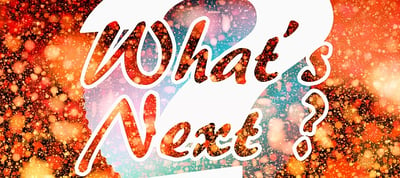
What's Next?
Want some more study materials for IB English? Our guide to IB English past papers has links to every free and official past IB English paper available!
Are you hoping to squeeze in some extra IB classes ? Learn about the IB courses offered online by reading our guide.
Not sure where you want to go to college? Check out our guide to finding your target school. Also, figure out your target SAT score or target ACT score .

Trending Now
How to Get Into Harvard and the Ivy League
How to Get a Perfect 4.0 GPA
How to Write an Amazing College Essay
What Exactly Are Colleges Looking For?
ACT vs. SAT: Which Test Should You Take?
When should you take the SAT or ACT?
Get Your Free

Find Your Target SAT Score
Free Complete Official SAT Practice Tests
How to Get a Perfect SAT Score, by an Expert Full Scorer
Score 800 on SAT Math
Score 800 on SAT Reading and Writing
How to Improve Your Low SAT Score
Score 600 on SAT Math
Score 600 on SAT Reading and Writing
Find Your Target ACT Score
Complete Official Free ACT Practice Tests
How to Get a Perfect ACT Score, by a 36 Full Scorer
Get a 36 on ACT English
Get a 36 on ACT Math
Get a 36 on ACT Reading
Get a 36 on ACT Science
How to Improve Your Low ACT Score
Get a 24 on ACT English
Get a 24 on ACT Math
Get a 24 on ACT Reading
Get a 24 on ACT Science
Stay Informed
Get the latest articles and test prep tips!

As an SAT/ACT tutor, Dora has guided many students to test prep success. She loves watching students succeed and is committed to helping you get there. Dora received a full-tuition merit based scholarship to University of Southern California. She graduated magna cum laude and scored in the 99th percentile on the ACT. She is also passionate about acting, writing, and photography.
Ask a Question Below
Have any questions about this article or other topics? Ask below and we'll reply!

English Collaborative
HL Essay Student Resources and Sample Work
These resources are ready to hand to students. They offer a description of the assignment and take students through a step by step process to complete a draft of their HL Essay.
Literature Course
Language and literature course, a note about the resources.
Step 5 of the resources asks students to write their inquiry question on a shared Google document that all students have editing rights to. The Google doc uses a “Red, Yellow, Green” tracking system so that students know when their inquiry question has been approved as “Green” or “good to go”. The transparent nature of the document not only holds students accountable for their submission, it also allows other students to learn from their peer’s approaches to developing and writing inquiry questions. The transparent nature of the document also ensures variety as the specific topics and inquiry questions are on a “first come, first approved” (traceable through the revision history of the document). While students may feel a bit self conscious about the transparent nature of the document, they ultimately appreciate the insights gained from the experience and appreciate the development of the line of inquiry as an iterative process. Once students are “Green-lit”, those inquiry questions can serve as models and examples for other students. A sample tracking document, with sample HL Essay lines of inquiry, is provided below. Additionally, there is a Word template of the tracking document that can be uploaded to Google Docs; it should easily convert.
HL Essay Sample Lines of Inquiry and Tracking Document
Sample hl essays.
Below are a range of sample essays that are all “good” to “excellent” and would be marked in the 5-7 range. At the end of each essay are holistic comments by criterion that identify the strengths and limitations of the essay against each of the IB Language A HL Essay assessment criteria.
The HL Essays below have been externally marked by the IBO on the HL Essay Rubric; final marks are provided in leui of holistic comments.
Marks A:5 B:5 C:5 D:5
Marks A:4 B:4 C:4 D:4
Related Posts
IB English A Literature: HL Essay Assessment Considerations
IB English A Language and Literature: HL Essay Assessment Considerations
Photo by hannah grace on Unsplash
Leave a Reply Cancel reply
You must be logged in to post a comment.
DP English A: Language & Literature
Website by David McIntyre & Tim Pruzinsky
Updated 7 November 2024
InThinking Subject Sites
Subscription websites for IB teachers & their classes
Find out more
- thinkib.net
- DP Business Management
- DP Chemistry
- DP Computer Science
- DP Economics
- DP English A: Literature
- DP English B
- DP French B
- DP Geography
- DP German A: Lang & Lit
- DP Global Politics
- DP Maths: Analysis & Approaches
- DP Maths: Applications & Interpretations
- DP Psychology
- DP Spanish A
- DP Spanish Ab Initio
- DP Spanish B
- DP Turkish A: Literature
- DP Visual Arts
- MYP English Language & Literature
- MYP Resources
- MYP Spanish Language Acquisition
- Career-related Programme
- School Leadership
Disclaimer : InThinking subject sites are neither endorsed by nor connected with the International Baccalaureate Organisation.
InThinking Subject Sites for IB Teachers and their Classes
Supporting ib educators.
- Comprehensive help & advice on teaching the IB diploma.
- Written by experts with vast subject knowledge.
- Innovative ideas on ATL & pedagogy.
- Detailed guidance on all aspects of assessment.
Developing great materials
- More than 14 million words across 24 sites.
- Masses of ready-to-go resources for the classroom.
- Dynamic links to current affairs & real world issues.
- Updates every week 52 weeks a year.
Integrating student access
- Give your students direct access to relevant site pages.
- Single student login for all of your school’s subscriptions.
- Create reading, writing, discussion, and quiz tasks.
- Monitor student progress & collate in online gradebook.
Meeting schools' needs
- Global reach with more than 200,000 users worldwide.
- Use our materials to create compelling unit plans.
- Save time & effort which you can reinvest elsewhere.
- Consistently good feedback from subscribers.
For information about pricing, click here
Download brochure
See what users are saying about our Subject Sites:
Find out more about our Student Access feature:
- HL Essay: Exemplar 11 (The Remains of the Day)
- Higher level essay
- HLE sample work
The following Higher Level (HL) Essay is written about Kazuo Ishiguro’s novel, The Remains of the Day. Elsewhere on the site, subscribers can find materials for teaching the novel. It’s a very strong essay. It’s also a reasonably well focused essay, framed by a question that invites a discussion of literary representation. Arguably, however, the focus could be further refined as the student seems to make salient...
To access the contents of this site, you must subscribe .

IB Language and Literature: Excellent Exemplars
- IB Language and Literature General Resources & Information
- Books in the library
- State Library
- National Library
- Cat on a Hot Tin Roof
- The World's Wife
- Chronicle of a Death Foretold
- A Doll's House
Excellent Exemplars
- The Social Dilemma
- Seamus Heaney
- Home This link opens in a new window
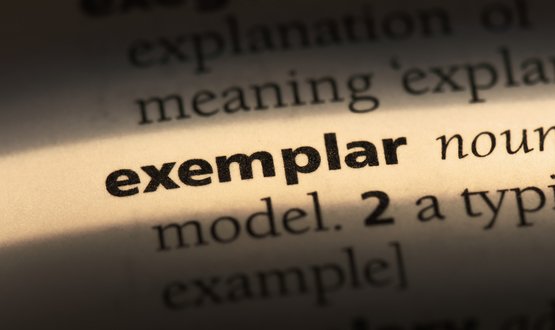
Exemplar Podcasts

- Podcast Exemplar 1 Stephanie Cho
Exemplar PDFs

- Exemplar Mock HL Essay 1 Demonstrating the Ability & Disruptive Power of Photography Giles Peress Challenges the Underlying Causes of Global Complacency & Ignorance Through the Use of Photographic Journalism
- Exemplar Mock HL Essay 2 How Does the Amanda Knox Documentary Highlight the Way in Which the Media Manipulates Legal Cases?
- Exemplar Mock HL Essay 3 In What Way Does Judith Wright Challenge Contemporary Attitudes Towards the Australian Landscape?
- Exemplar Paper 1 response to Alex Perry Extract From Alex Perry's 'Oscar Pistorius & South Africa's Culture of Violence' - How Does Perry Alert Readers To The Problems in south Africa?
- Exemplar Paper 1 Response to Monbiot
- << Previous: A Doll's House
- Next: The Social Dilemma >>
- Last Updated: Sep 6, 2024 3:43 PM
- URL: https://geelong.libguides.com/ibenglish

IMAGES
COMMENTS
High scoring IB English A (Lang & Lit) HL Essay Internal Assessment examples. See what past students did and make your English A (Lang & Lit) HL Essay IA perfect by learning from examiner commented examples!
In this guide, LitLearn students (and 2022 IB grads!) Lareina Shen and Saesha Grover share their wisdom on how to conquer the IB English Higher Level Essay (HLE). Lareina achieved an IB44, and Saesha achieved an IB45 as well as the coveted IB7 in IB English Literature HL, so you are in safe hands.
Improve your grades immediately with these 8 important IB English HL Essay strategies, tips and examples shared by our expert IB English tutors.
What You Need to Know. The HL Essay is a 1200-1500 word formal essay and it is based on a literary work studied as part of the course. You cannot use the same work for the IO or the Paper 2 [1] for this essay.
5 sample papers across genres; Examiner scores and comments; Line of Inquiry guidance; Step-by-step approach to building the HLE in small and manageable chunks; Complete set of graphic organizers to guide students from start to finish
If you're not sure how to write your essay, here's a guide to what your essay should look like for the IB English SL/HL papers. This guide gives advice on how you should structure your essay and what you should include in it.
HL Essay Student Resources and Sample Work. These resources are ready to hand to students. They offer a description of the assignment and take students through a step by step process to complete a draft of their HL Essay.
The HL essay offers students an opportunity to develop as independent, critical and creative readers, thinkers and writers by exploring a literary or language topic over an extended period of time, refining their ideas by means of a process of planning, drafting and re-drafting.
HLE sample work. HL Essay: Exemplar 11 (The Remains of the Day) The following Higher Level (HL) Essay is written about Kazuo Ishiguro’s novel, The Remains of the Day. Elsewhere on the site, subscribers can find materials for teaching the novel. It’s a very strong essay.
Exemplar Mock HL Essay 1. Demonstrating the Ability & Disruptive Power of Photography Giles Peress Challenges the Underlying Causes of Global Complacency & Ignorance Through the Use of Photographic Journalism. Exemplar Mock HL Essay 2.